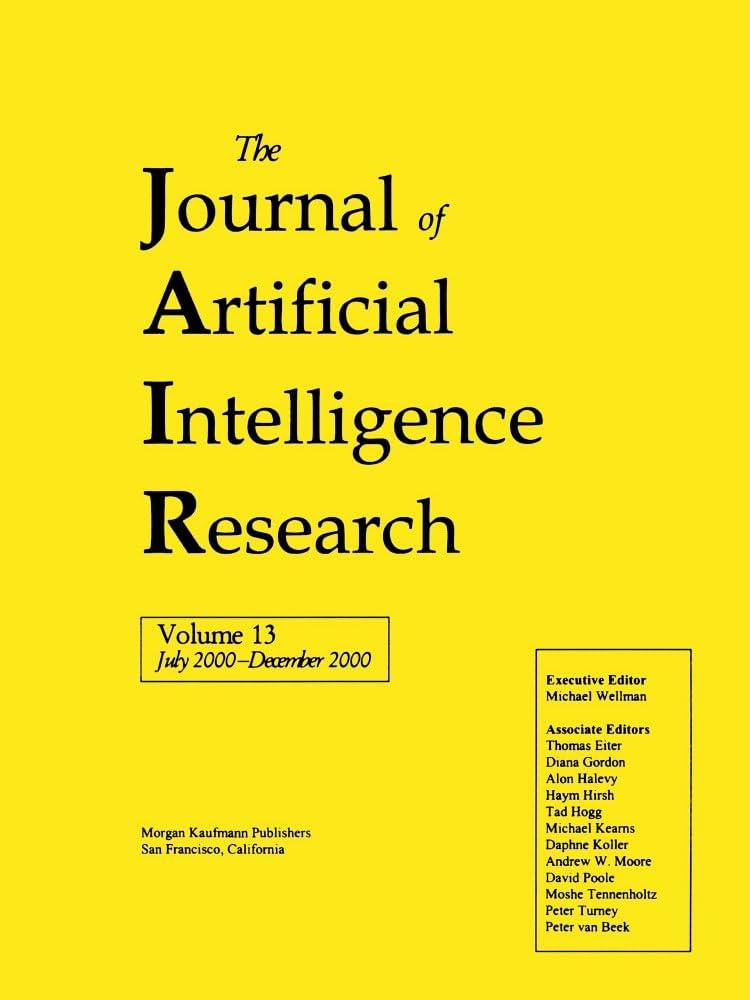学习陈述性行动模型的综合框架
IF 4
3区 计算机科学
Q2 COMPUTER SCIENCE, ARTIFICIAL INTELLIGENCE
引用次数: 4
摘要
声明性操作模型是动态系统的状态转换的紧凑表示,它概括了整个世界对象。声明性操作模型的规范通常是一项复杂的手工任务。在本文中,我们通过状态约束建立了声明性动作模型,并将这种模型的学习作为组合搜索。这里提供的综合框架允许我们将声明性操作模型的学习与众所周知的问题解决任务联系起来。此外,我们的框架允许我们根据四个维度来描述文献中的现有工作:(1)目标行动模型,根据它们定义的状态转换;(2)可用的学习实例;(3)用于指导学习过程和评价学习行为模型质量的功能;(4)学习算法。最后,本文列举了陈述性行为模型学习的相关成功应用,并讨论了一些有待解决的问题,旨在鼓励未来的研究工作。本文章由计算机程序翻译,如有差异,请以英文原文为准。
A Comprehensive Framework for Learning Declarative Action Models
A declarative action model is a compact representation of the state transitions of dynamic systems that generalizes over world objects. The specification of declarative action models is often a complex hand-crafted task. In this paper we formulate declarative action models via state constraints, and present the learning of such models as a combinatorial search. The comprehensive framework presented here allows us to connect the learning of declarative action models to well-known problem solving tasks. In addition, our framework allows us to characterize the existing work in the literature according to four dimensions: (1) the target action models, in terms of the state transitions they define; (2) the available learning examples; (3) the functions used to guide the learning process, and to evaluate the quality of the learned action models; (4) the learning algorithm. Last, the paper lists relevant successful applications of the learning of declarative actions models and discusses some open challenges with the aim of encouraging future research work.
求助全文
通过发布文献求助,成功后即可免费获取论文全文。
去求助
来源期刊

Journal of Artificial Intelligence Research
工程技术-计算机:人工智能
CiteScore
9.60
自引率
4.00%
发文量
98
审稿时长
4 months
期刊介绍:
JAIR(ISSN 1076 - 9757) covers all areas of artificial intelligence (AI), publishing refereed research articles, survey articles, and technical notes. Established in 1993 as one of the first electronic scientific journals, JAIR is indexed by INSPEC, Science Citation Index, and MathSciNet. JAIR reviews papers within approximately three months of submission and publishes accepted articles on the internet immediately upon receiving the final versions. JAIR articles are published for free distribution on the internet by the AI Access Foundation, and for purchase in bound volumes by AAAI Press.
 求助内容:
求助内容: 应助结果提醒方式:
应助结果提醒方式:


